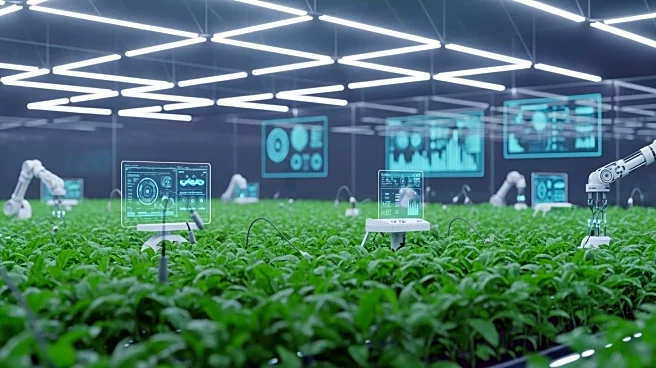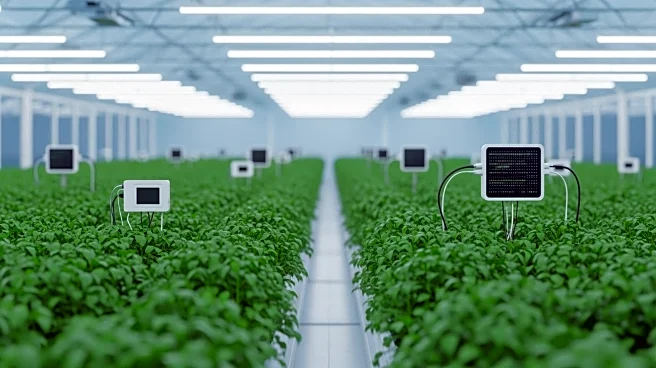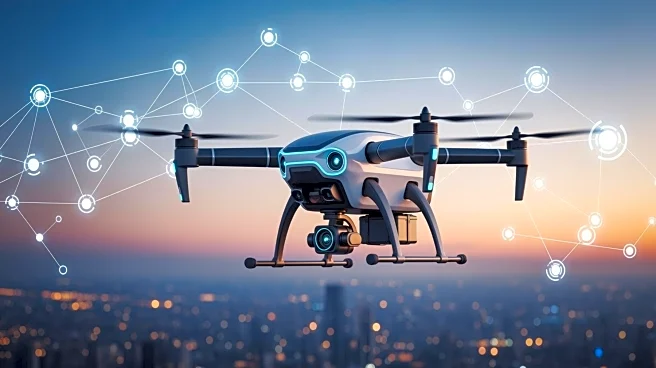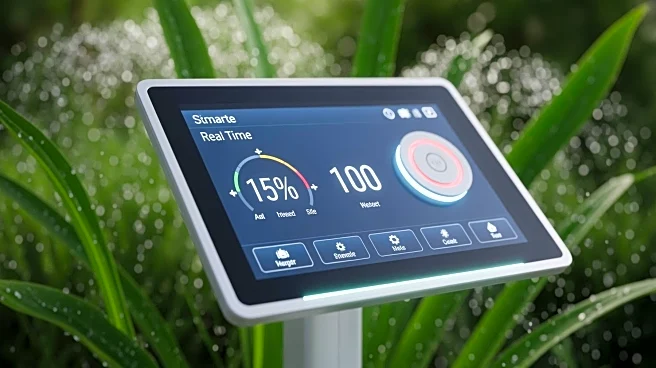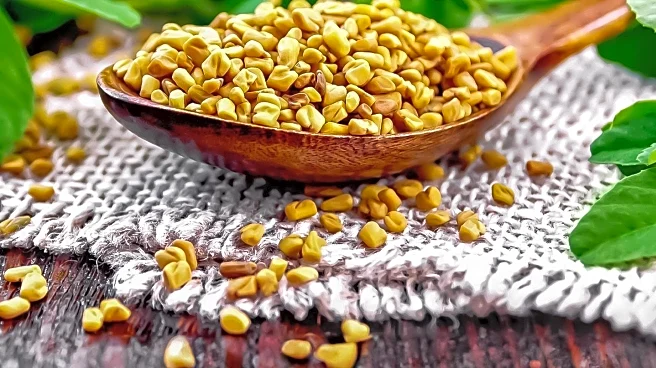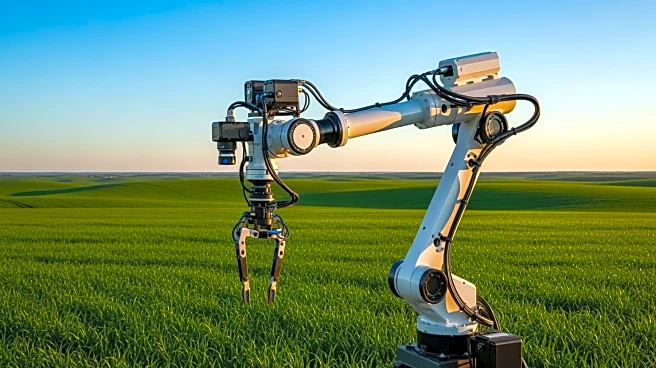What's Happening?
The U.S. smart agriculture market is expected to grow at a compound annual growth rate (CAGR) of 9.03% from 2025 to 2033, driven by the adoption of sustainable and data-driven agricultural practices. This
growth is fueled by technological advancements such as IoT, AI, and precision farming tools that enable real-time monitoring of crops, livestock, and soil. The Midwest and South regions are leading adopters, with large-scale commercial farms integrating these technologies to enhance productivity and sustainability. Federal incentives and the involvement of agritech firms are also contributing to the market's expansion.
Why It's Important?
The rapid growth of the smart agriculture market in the U.S. highlights a significant shift towards more efficient and sustainable farming practices. By leveraging advanced technologies, farmers can optimize resource use, reduce waste, and increase yields, which is crucial for meeting the growing demand for food while minimizing environmental impact. This trend also presents opportunities for agritech companies to innovate and expand their offerings, potentially leading to economic growth and job creation in the sector. The emphasis on precision agriculture aligns with broader efforts to address climate change and ensure food security.
What's Next?
As the market continues to expand, further integration of smart technologies in agriculture is expected. This includes the development of more sophisticated data analytics platforms and the adoption of autonomous vehicles and drones for farm management. Small and medium-sized farms are likely to increase their use of smart agriculture tools, supported by affordable technology options and government grants. The ongoing digital transformation in agriculture will require continued investment in infrastructure and education to ensure widespread adoption and maximize the benefits of these innovations.
